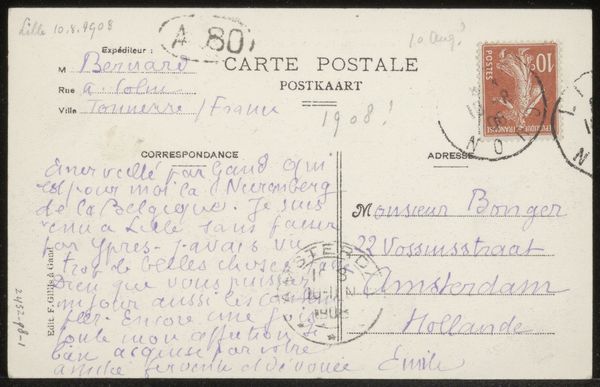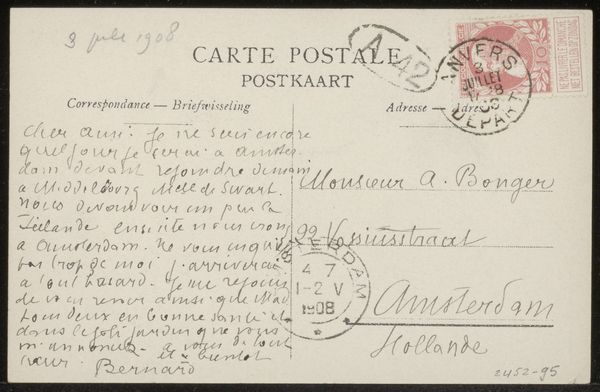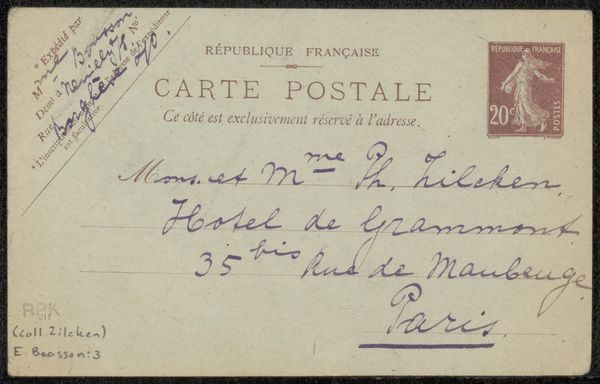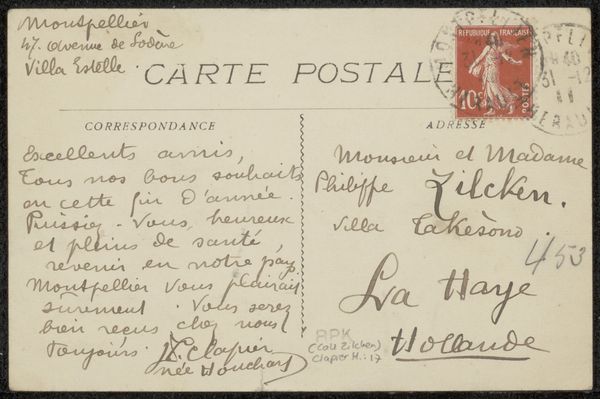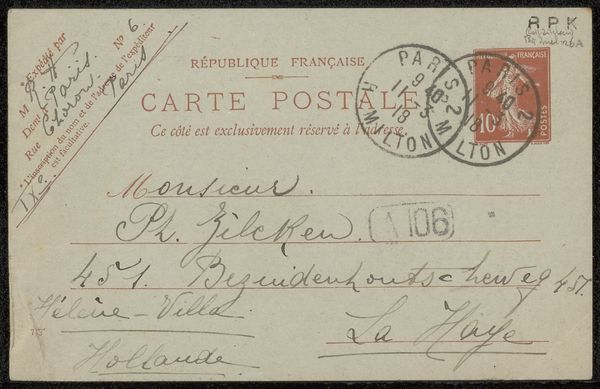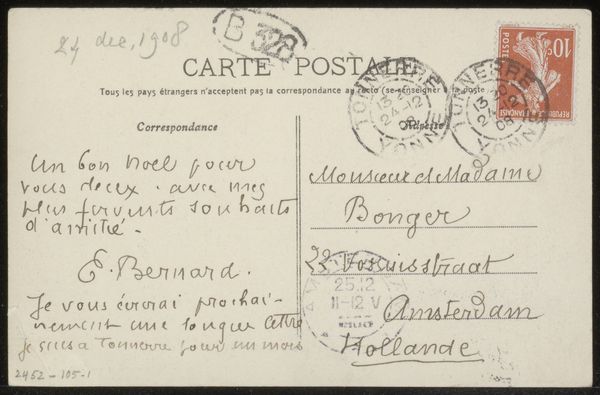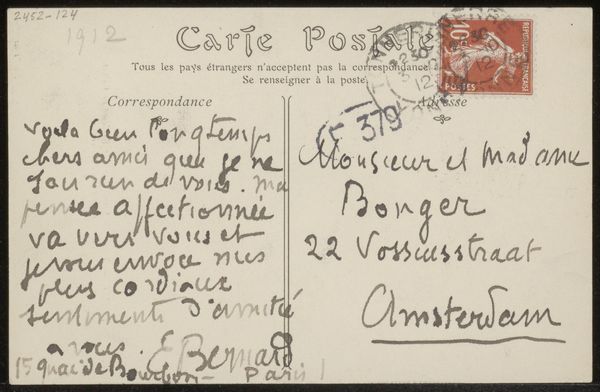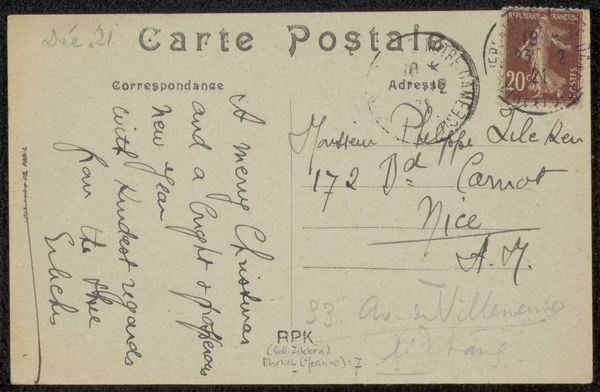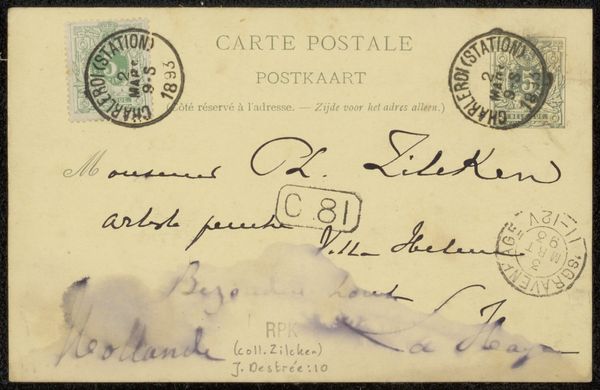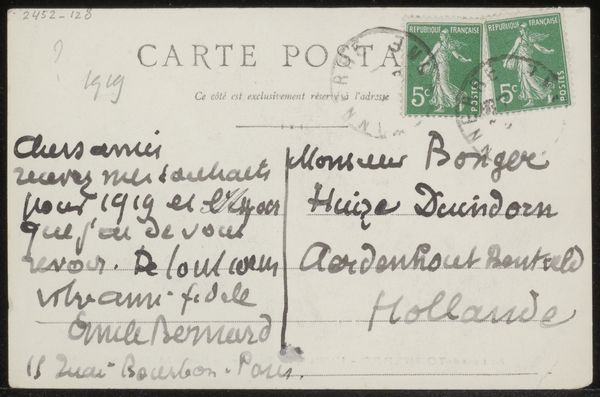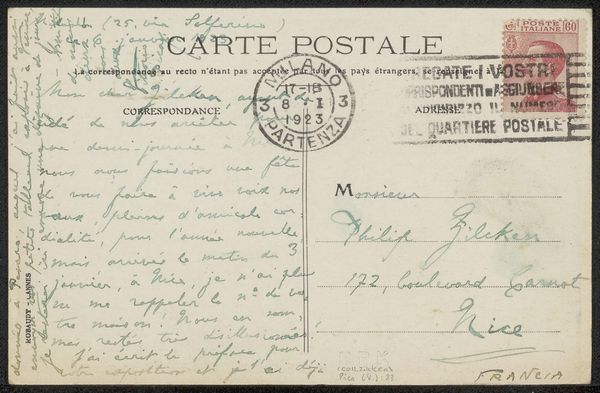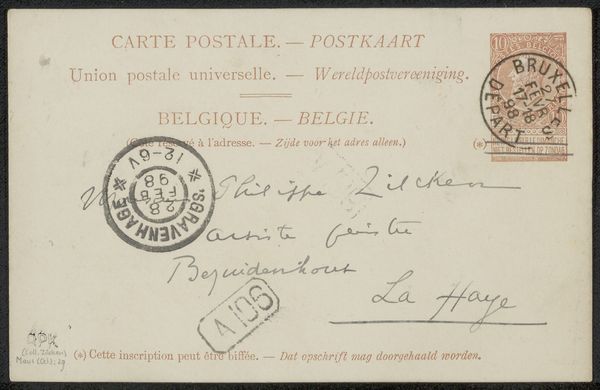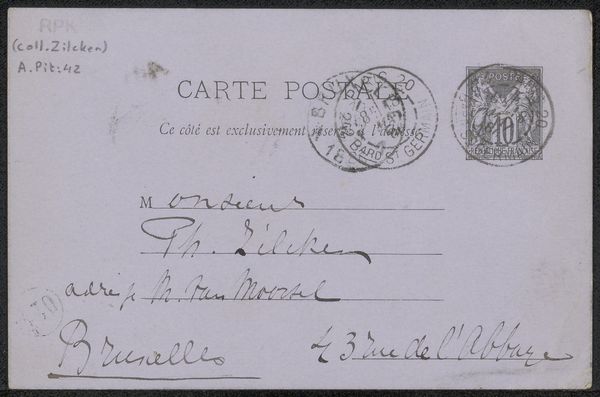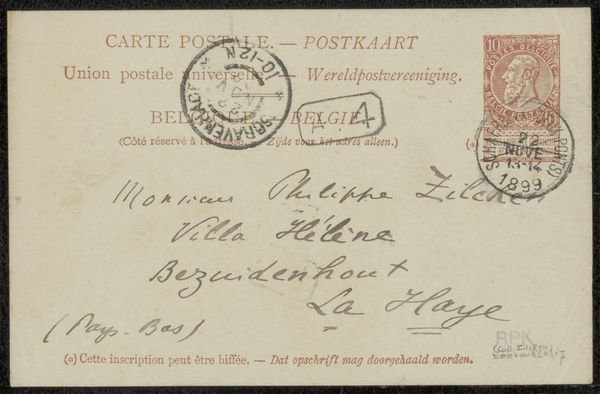
Copyright: Rijks Museum: Open Domain
Editor: We're looking at a postcard, a "Prentbriefkaart aan Andries Bonger," created by Emile Bernard before 1922. It’s ink on paper, but it also appears to have a textile element embedded, perhaps in the paper itself. I'm struck by how intimate and personal it feels, like peering into a moment frozen in time. How do you see this postcard within the larger context of art history? Curator: This piece is fascinating as a primary source. Beyond its aesthetic qualities as a drawing, it offers a direct line to the social networks of the Post-Impressionist artists. Bonger was, of course, van Gogh's brother's best friend. How does this correspondence illuminate the artistic exchanges and support systems of the era? The accessibility of postcards democratized art dissemination in a way previously unavailable; it let them communicate rapidly but also served as distribution points. What could Bernard's decision to use a postcard suggest about the intended audience and purpose of this particular image? Editor: It is interesting to consider it as part of the artistic exchange. Do you think that the context influenced the art produced at that moment? Curator: Absolutely. The art world then, as now, was shaped by its institutions. Consider the Parisian art scene: the established Salons, the independent galleries, and the critical reception played crucial roles in determining an artist’s success. Letters such as this remind us that it was built by a supportive audience that would encourage innovation but may have felt pressure to create in particular, trending ways. How would such letters impact Bernard and other members’ feelings and confidence? Editor: So, it’s not just the artwork itself, but also its journey and reception that give it meaning? Curator: Precisely. By examining the context in which a work was created and consumed – its production, dissemination, and interpretation – we gain a far richer understanding of its significance and impact. Editor: I hadn’t thought about it that way. It makes me want to dig even deeper into the relationships behind the art! Curator: That's the power of historical perspective – to unveil the stories woven into the fabric of art itself.
Comments
No comments
Be the first to comment and join the conversation on the ultimate creative platform.
